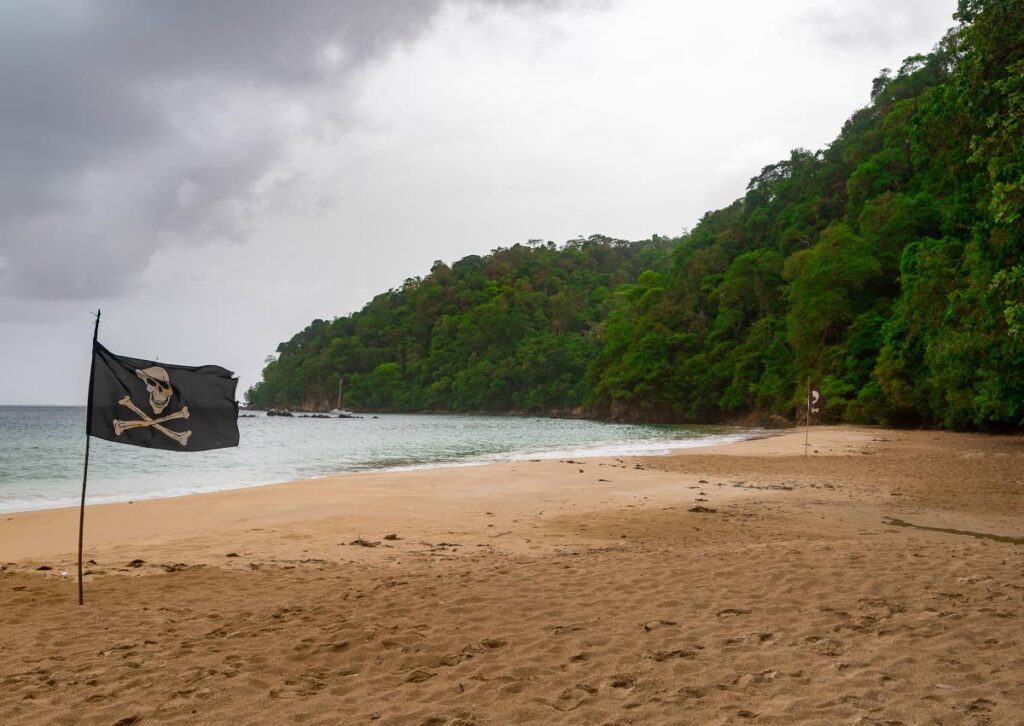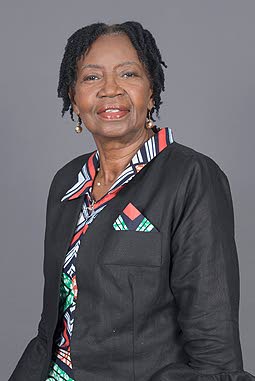Bays and battles

Dr Rita Pemberton
The name Charlotteville conjures up breathtaking views of the unspoilt white-sand beach which stretches along the entire village front and frames the placid blue Caribbean Sea.
Understandably, the area attracts tourists who seek to enjoy both its beauty and the strong traditional cultural expressions of the community. But Charlotteville is far more than simply a magnet for tourists. It possesses a very rich history which is entwined with the European presence in the Caribbean, and from its specific attraction to the Dutch, British, French, pirates, Americans and the resulting interaction between them.
Oral sources say the district was named after a Dutchwoman who is buried behind the great house; another story says the area was named after an enslaved woman whom the plantation owner loved and to whom he bequeathed his estate.
The other, most accurate explanation is that it was named after Queen Charlotte, the popular wife of the British King George III.
The stories, however, reflect the pattern through which women settled in the area. The first female European presence occurred under the early Dutch colonising efforts: black women were introduced to provide plantation labour by Europeans bringing enslaved people to the island, some of whom were forced into intimate relations with their owners; and the queen represents the few white women who made a permanent home in the area when plantations were established there.
Lying on the northeastern tip of Tobago, this district is geographically well-endowed. It is one beautiful large bay with sections of small bays, each of which has a distinguishing name. They include Man of War Bay (Man O’War Bay), the area used by the British to house their naval security squadron; Pirates Bay, the haunt of pirates during the 16th and 17th centuries; Boat House Bay, named after the location where the coastal steamers docked to collect produce for sale in Trinidad during the 20th century; Bottom Bay, so named to caution mariners about reefs; Rest House Bay, near the government rest house; Top Bay, in the middle of the village; Corner Rock and Buccaneer (Boucari) Bay, which delineate a reef area (accessible by sea); and Walker Bay, a bathing area once only accessible by boat, but which has since been provided with 150 steps.
What is perhaps less well known is that Charlotteville also possesses two waterfalls and a bay with an unusual beach. This bay, which is known by several names – Sand Bay; Lovers Bay or Bay for Two – which is only accessible by boat and visible at low tide, is a small, beautiful pink-sand beach.
Man of War Bay is immensely calm for most of the year, and, as a safe, protected harbour, attracted Europeans. It features very prominently in Tobago’s early history of European presence because it provided easy access to ships travelling in both directions and was convenient for those seeking to establish settlements.

The first European settlement in Charlotteville occurred in 1633, as part of the attempted Dutch settlement under Jan de Moor. The bay through which access to the island was made was called Jan de Moor Bay. The short-lived settlement was attacked and destroyed by the Spanish.
Next, the British sent a group of settlers led by the Rev Nicholas Leverton from Barbados in an attempt to colonise the island. They arrived via Charlotteville, the point most easily accessed from Barbados.
The settlers were expelled by the First People, and although more settles came in 1639, the effort remained unsuccessful and, with later attempts, served to intensify the hostility of the First Peoples, the Spaniards, who claimed ownership of the entire Caribbean, and the rival French.
Because its location facilitated access to passing treasure-laden Spanish ships, the area became a haven for pirates, including the infamous Henry Morgan, Blackbeard and Capt Finn, who established their careers by preying on Spanish treasure ships on their journey to Spain from the mines of America. This activity gave the bay its name and stimulated hopes and or expectations that treasure lies beneath the sea.
In an attempt to assert their claim to Tobago, the British were determined to expel the pirates from the area. A battle between the British Navy and Capt Finn was fought in 1721 between Pirates Bay and Tyrrells Bay in Speyside; the British captured Finn and his men.
The island became British in 1763 under the Treaty of Paris, and in order to assert possession, land was sold in 500-acre lots to people who could provide labour to begin cultivation within two years. Fortune-seekers, including investors and people from the depressed parts of Britain, especially Scotland, were attracted to Tobago.
The first lots in Charlotteville were sold to Abram Markoe (500 acres) – this was later resold in 1774; Edward Hawkins and Johnstone (200 acres); and Alexander Stewart (200 acres). These formed the bases of the Charlotteville and Pirates Bay estates, both of which cultivated sugar, indigo, nutmeg, ginger and cotton through enslaved labour, primarily from the Congo region of West Africa.
During this period it was urgent for the British to implement security measures to deal with foreign incursions, especially by their arch-rival France. Man of War Bay was considered ideal for defence and was surveyed as a base for part of the British navy to deal with enslaved insurrection and external security threats. A battery was established at Campbelton (named after Lieut Governor Peter Campbell), and was equipped with two cannons in 1777 to protect the island during the American revolution, when American pirates attacked it. The feared American attack on the bay in 1779 ended in their defeat.
The French, in support of the Americans, and using the opportunity to take back the island from the British, attacked the squadron in Man O’War Bay, sailed on to Scarborough and Plymouth, and captured the island in 1781. Tobago remained in French hands until 1793.
The decline of the sugar industry caused estates to change hands and in 1866 Bishop Joseph Turpin of the Anglican Church in St Vincent acquired Charlotteville and Pirates Bay estates, totalling 950 acres, which have remained in the possession of the family since then.
The estate was converted to cocoa production. Trinidad crown surveyor Charles Turpin and Cyril Turpin, a game warden/environmentalist in Uganda, purchased shares in the properties, which were converted into one estate. A village was planned, and lots were sold to some families in the area, such as the Carringtons, Murrays and Nicholsons.
After Emancipation many freed Africans took up residence in the area known as Congo Hill, where Africa traditional cultural practices flourished.
During the early 1900s, when migration from Charlotteville was on the increase, the area, where land was cheap, attracted migrants from Grenada, St Vincent, Martinique and Tobago west. The African population concentrated on cocoa production and providing services to the more remote northern communities. They remained steadfast practitioners of their African cultural traditions.
Charlotteville assumed importance regarding security during World War II, when an American base was established at Flagstaff Hill. The Americans constructed homes for staff, paved roads and created a community in the area in 1942. Jobs on the base attracted more inward migration from Grenada.
The history of Charlotteville is a mixture of battles, bays, European rivalry and settlement, and a determination to profit from exports based on enslaved African labour.
But the freed population has carved a space for itself and now uses its culture, the area’s history and natural beauty as tourism selling points, although some continue to hope the secrets of Pirates Bay will be revealed when sunken treasures on the seabed will one day be found.


Comments
"Bays and battles"